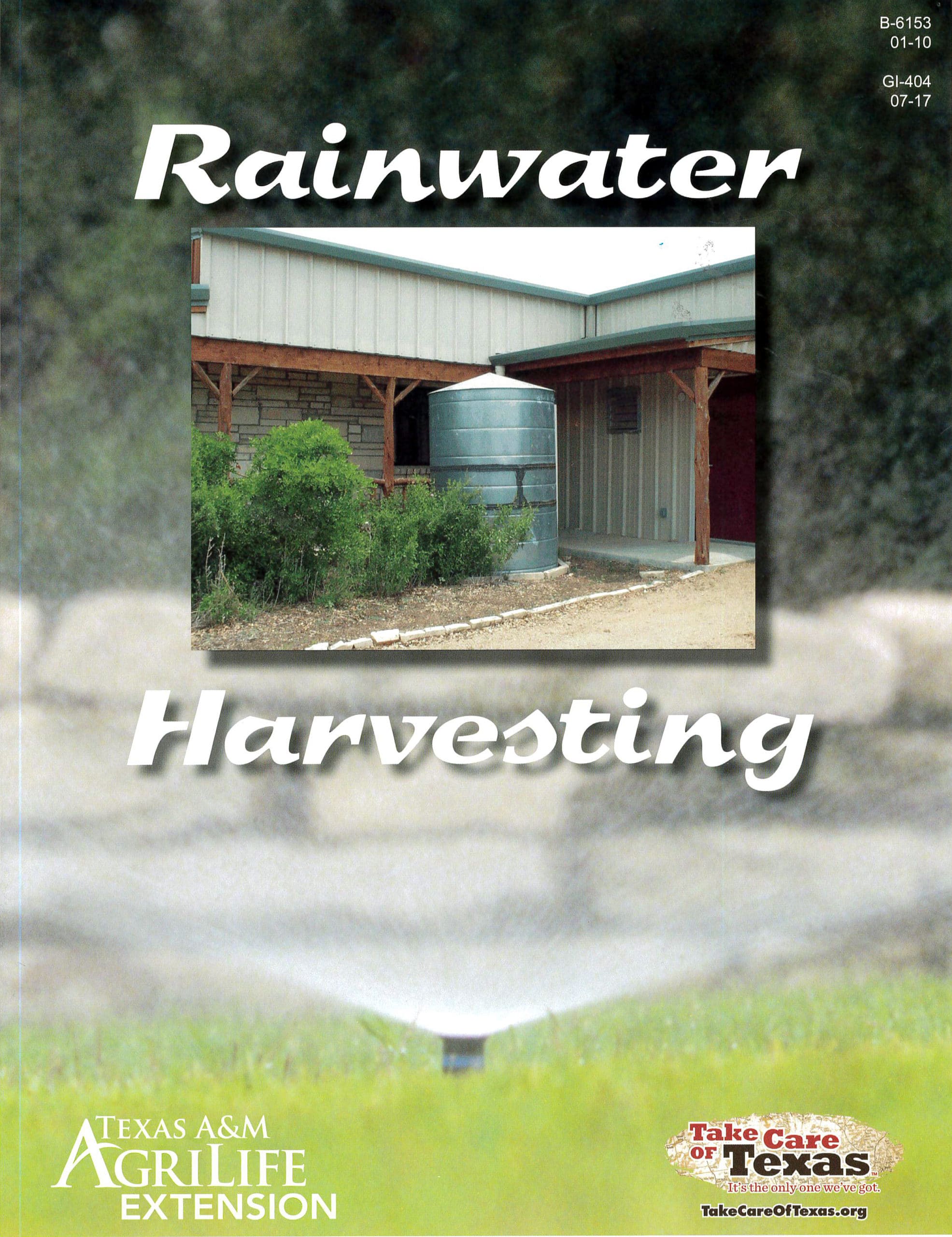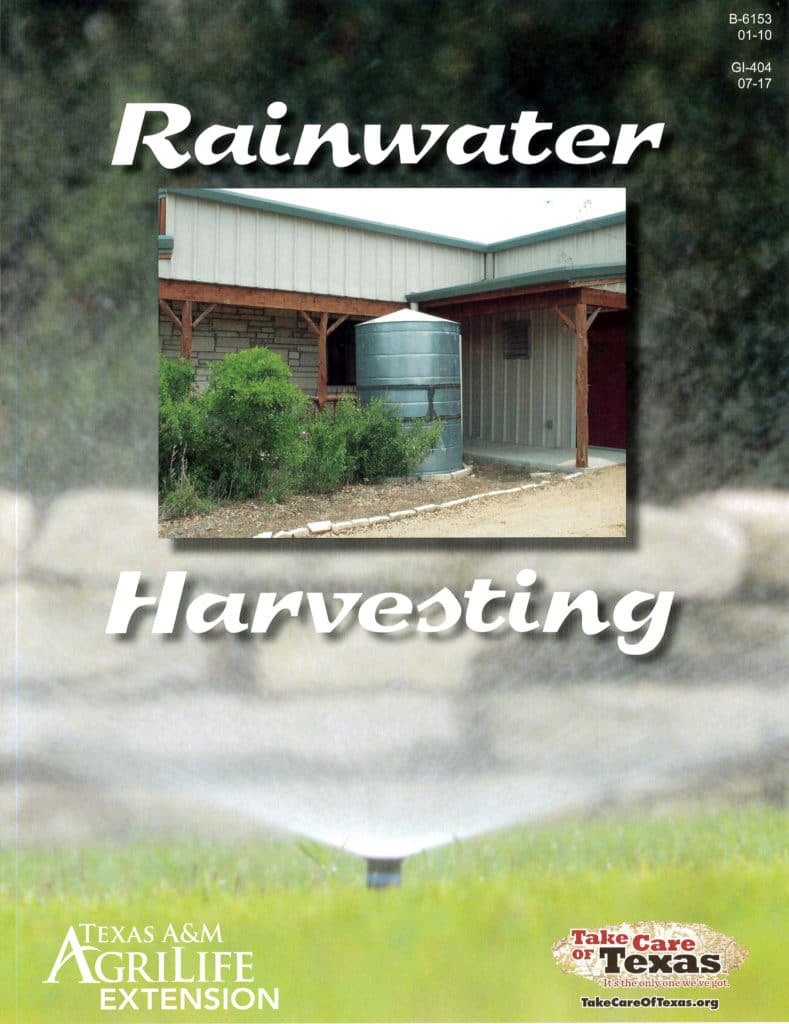Rainwater Harvesting

 Pickup this guide and other helpful water-saving literature at the LMUD district office located at 1097 Lohmans Crossing.
Pickup this guide and other helpful water-saving literature at the LMUD district office located at 1097 Lohmans Crossing.
Rainwater Harvesting is a publication produced by Texas A&M AgriLife Extension Service and is provided by TCEQ through their Take Care of Texas program.
Introduction
Can rain save you money? Yes. Even if you live where annual rainfall averages only 12 inches, you can save money by collecting and storing rainwater and using it to irrigate your trees, shrubs and lawn.
Efficient water use is increasingly important in Texas. With the state’s growing population and limited supply of both groundwater and surface water, Texans must use water wisely. Rainwater harvesting is an innovative approach anyone can use.
Rainwater harvesting captures, diverts and stores rainwater for later use. Rainwater can even be used for drinking, with proper treatment. But the easiest way to use stored rainwater is for landscaping. In many communities, 30 to 50 percent of the total water is used for landscape irrigation. If that demand for a limited natural resource can be reduced, everyone benefits.
Harvesting rainwater for use in the home landscape:
- Saves you money by reducing your water bills
- Reduces demand on the municipal water supply
- Makes efficient use of a valuable resource
- Reduces flooding, erosion and the contamination of surface water with sediments, fertilizers and pesticides in rainfall runoff
Rainwater is good for plants because it is free of salts and other minerals that harm root growth. As rainwater percolates into the soil, it forces salts down and away from root zones, allowing roots to grow better and making plants more drought tolerant.
Rainwater harvesting can be used both in large-scale landscapes, such as parks, schools, commercial sites, parking lots and apartment complexes, and in small residential landscapes. Whether your landscape is large or small, developed or new, the principles described here can help you install a rainwater harvesting system.
This 28-page publication includes tips and techniques to start your own rainwater harvesting system including:
- How rainwater harvesting works
- Simple rainwater harvesting systems
- Designing and building a simple rainwater harvesting system
- What makes up complex rainwater harvesting systems
- How a complex rainwater harvesting system works
- Designing and Building complex rainwater harvesting systems
- Maintaining your rainwater harvesting system
- Guidelines for gutters and downspouts
Data included in the publication:
- Average Monthly Rainfall for Texas Cities
- Runoff Coefficients
- Plant Water use Coefficients
- Average Monthly Evapotranspiration for Texas Cities
Worksheets supplied in the publication include:
- Monthly Supply Worksheet
- Monthly Demand Worksheet
- 2-Year Storage/Supplemental Water Use Calculations

 You are now being redirected to the WaterSmart page.
You are now being redirected to the WaterSmart page.